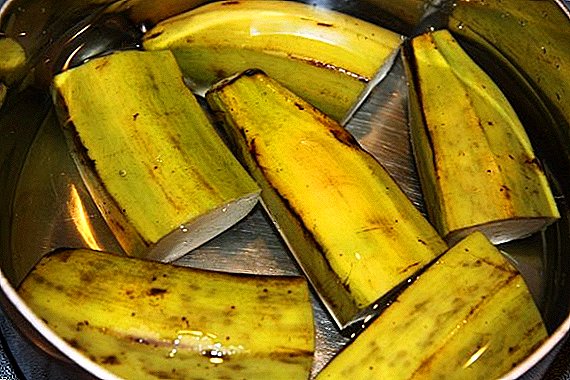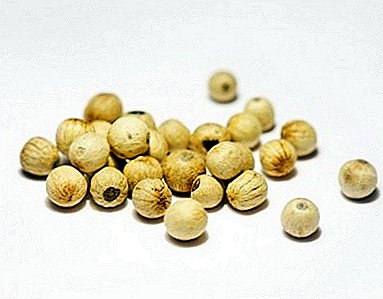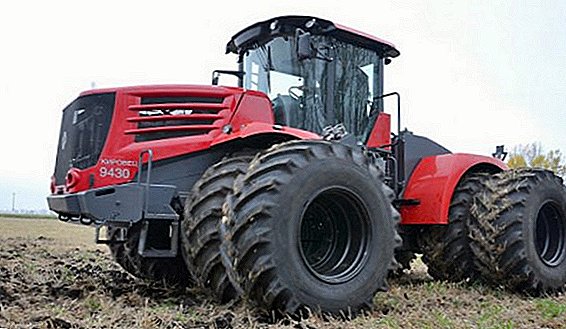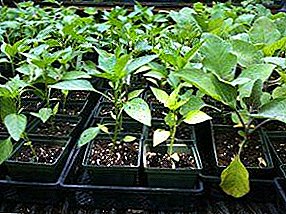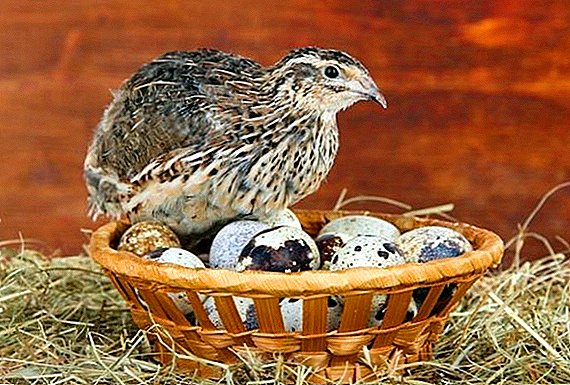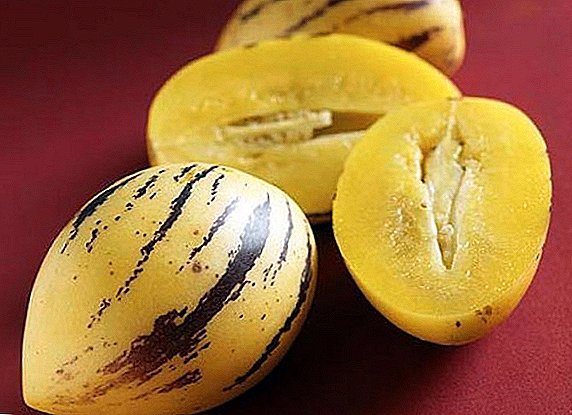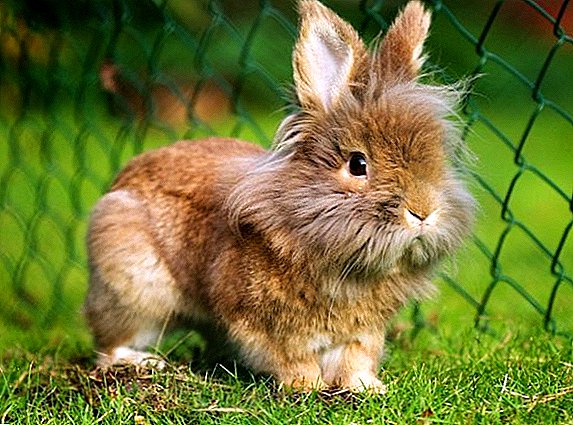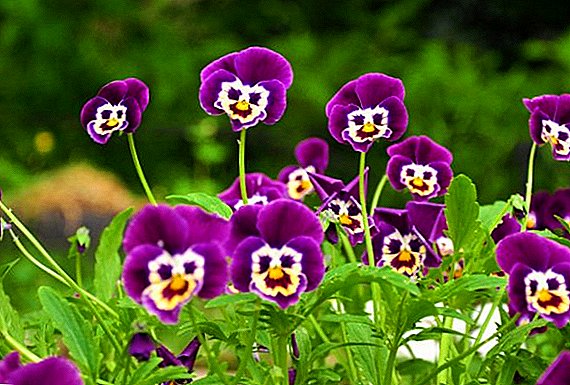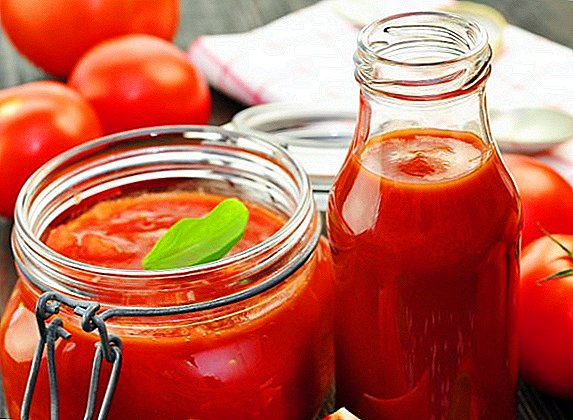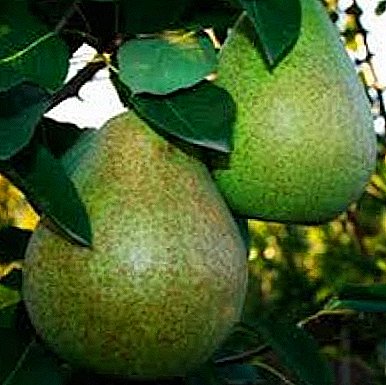
Pears very helpful for the human body. The fruit is rich in essential oils, organic acids, tannins, many vitamins and trace elements.
With regular use of pears:
- The ability of the body to counteract various infections is increasing.
- The probability of seasonal depressions decreases.
- The amount of sugar in the blood decreases in diabetes.
- Work of heart, kidneys, a liver improves.
- Inflammation of the urinary tract is reduced.
- Improves appetite and digestion.
- Pear compotes help fight a strong cough.
Scientists, knowing the usefulness of pears, have been working for more than one century to create new varieties that could surpass their predecessors in taste and resistance to disease. The Victoria pear variety is an excellent result of the difficult work of breeders.
Breeding history and breeding region
The Victoria pear variety was first discovered by the leading breeders of the Institute for Irrigated Horticulture I. N. Boyko, P. V. Grozditsky, E. A. Avramenko, G. I. Kulikov. A new variety appeared as a result of crossing pears of two varieties: Bere Bosk and Totobozhka. The variety is bred in the south of Ukraine, so the pear is very easy to adapt to life in the steppes and forest-steppe. Victoria endures drought and heat, refers to the summer varieties of pears.
To the summer group of varieties also belong: Limonka, Cosmic, Ilyinka, Carmen and Nursery.
Pear "Victoria": description of the variety and photos
 Victoria Pear grows medium size. The crown of the tree in shape resembles a cone with a flattened top.
Victoria Pear grows medium size. The crown of the tree in shape resembles a cone with a flattened top.
The fruits have a characteristic pear shape. Ripe pears look very attractive: a delicate pink blush appears. The rind is smooth and thin: numerous are well seen through it.
subcutaneous points.
The flesh of pears does not have a pronounced granulation, white, exudes a light scent.
The pears are securely attached with a long and curved stem to the branches of the tree.
You can visually get acquainted with the pear “Victoria” in the photo below:




Characteristic
Victoria pear belongs to table varieties: great taste combined with a very attractive appearance of the fruit. Pears are very juicy, sugar content (7.8%) prevails over acids (0.4%). Experts estimate the taste of pears in 4.5 points. Fruits are stored in refrigerated places for only a few months, so they should be consumed first.
Such pear varieties can boast of excellent taste: Kupava, Krasulia, Lada, Dekabrinka and Rossoshanskaya Dessert.
Yield
Victoria variety gives the first harvest not earlier than the first six years after planting. Spring frosts do not harm Victoria's pear: characteristic for this variety late vegetation and flowering. Thanks to this peculiarity, a lot of fruits are tied up; every year you can count on a bountiful harvest. Pears grow large, some specimens reach 430 grams, the average fruit weight is 250 grams. Mature tree annually can bring up to 200 kg of crop.
Excellent yields are demonstrated by such varieties: Tatiana, Tikhiy Don, Forest Beauty, Noyabrskaya and Lel.
Frost resistance
Mature trees even very cold weather is easily tolerated.
There are also other varieties of pears that are distinguished by frost resistance, such as: Thumbelina, Lira, Nika, Otradnenskaya and Perun.
Attention gardener require only seedlings. Around the young tree on the ground you need to distribute a layer of mulch: at the same time it will additionally fertilize the plant, and warm it during hard frosts.
If pear branches are still very thin, then they are advised to tie them together with the trunk for the winter so that strong winds do not cause irreparable harm to them during bad weather.
The trunk can be tied to a peg, thereby providing the tree with even greater stability.
Pollinators
 Victoria variety is only half self-fruited. Some fruits may not contain seeds.
Victoria variety is only half self-fruited. Some fruits may not contain seeds.
Productivity will increase significantly if on the same plot with Victoria grade will grow pollinators: Bere Dumont, Williams Red, Nikolai Kruger.
All these varieties of pears bloom at about the same time.
Ripening
Victoria pear variety applies to summer varieties. The fruits reach removable maturity in the second half of August: pears by this time have already reached their size, the accumulation of vitamins has stopped. However, the fruit pulp is still hard. This grade reaches consumer maturity closer to the middle of September: pears become very juicy, soft and fragrant.
Planting and care
Soil preparation
Pear seedlings are planted in early spring, however, it is better to dig a hole in the fall and fill it with a layer of nutritious soil.
If you plant a tree in a newly prepared pit, then, over time, a layer of fertile land will surely settle at least 1 / 5th of the entire height, the young plant will be much deeper than necessary.
IMPORTANT: Pear seedlings should not be deeply buried. The root neck should be slightly above ground level.
If the plant is planted deep, over time the root system will start to rot and the tree will disappear.
Gardeners advise to pitch the walls of the pit in many places with forks in order to ensure the best possible access of oxygen to the root system of the plant.
At the bottom of the pit, a small hill is formed from the fertile soil. Sapling set on a hill and spread the roots on its sides. When the pit falls asleep, the tree should be periodically shaken so that the earth is evenly distributed between all the roots, and no air gaps are formed.
When the pit is filled with earth, the plant must be watered abundantly. If at the same time the land will squeeze heavily, then you need to fill up a few layers and tamp them down.
Fertilizer
 When planting seedlings in a pit, it is recommended to lay a bucket of rotted manure, peat or compost as a fertilizer.
When planting seedlings in a pit, it is recommended to lay a bucket of rotted manure, peat or compost as a fertilizer.
ATTENTION: You can not put fresh manure in the planting pit: the plant's gentle root system can get a chemical burn.
An adult plant must be organically fertilized once every few years. The total dose of fertilizer is about 4 kg / sq. m. Organically fertilizers are distributed around the tree and the earth is slightly dug up.
Mineral fertilizers are applied annually. Ammonium nitrate, potassium chloride and superphosphate are added to the water for irrigation.
The most effective way of distributing microfertilizers is spraying a tree during the period of bud formation, after flowering, during planting and before wintering.
Watering
Victoria pear variety is very tolerates drought. The plant is quite enough and rainwater. If the summer was very dry, the pear can be additionally watered.
Best if earthy lump will be constantly evenly moistened. With sudden changes in the humidity of the earthy coma, the fruits may crack.
Pruning
 Pruning for a pear is very important: during it, dried and diseased branches are removed, the crown is thinned out, and fruiting is regulated.
Pruning for a pear is very important: during it, dried and diseased branches are removed, the crown is thinned out, and fruiting is regulated.
Pruning is carried out in early spring when the air temperature reaches 5 ° C. Fundamental rules:
- The branches are cut with sharp shears.
- Place the cut necessarily need to be processed using one of the proposed means: Rannet, oil paint, varnish, garden var.
- If the crown is thick, then it is necessary to partially remove the branches. On the remaining branches a greater yield will grow due to better illumination.
- The branches growing down must be removed: they are the least fruitful.
- Branches growing up must be shortened: it stimulates the growth of branches directed horizontally. Such pruning helps to form a low and lush tree, giving abundant yields.
Diseases
Consider how common diseases affect Victoria.
Scab
The Victoria pear variety is resistant to this dangerous disease.
Monilioz
The source of the disease is also a very small fungus that infects the fruit. The pears are covered first with small brown dots that will increase over time until the fruits rot completely. The missing pears still cling tightly to the branches and infect the neighboring fruits. Required delete all infected pearsso that fruit rot does not spread to the entire crop.
Mealy dew
A very dangerous disease of pears: a parasitic fungus affects shoots, leaves and even flowers. The trees are covered with hoarfrost.
The fungus damages the foliage, the flowers, and the fruits that begin to fall off fall. Spores of the fungus easily survive even the most severe frosts.
The only way to completely get rid of the fungus is to constantly inspect the tree, remove the damaged areas and immediately burn them. The spores of the fungus are very tenacious, so the tree is necessary spray several times a year Sulfite or Fundazole to completely eradicate the disease.
Black cancer
The disease affects the bark of trees: wounds form on it, which will increase over time. Wounds are surrounded by brown spots. The disease can spread to the leaves, flowers and fruits. Places affected by cancer should be smeared with blue vitriol and apply a layer of clay. In order to prevent the need annually in the autumn to collect and burn fallen leaves.
How the rust, a bacterial burn and //selo.guru/ptitsa/bolezni-p/gribkovye/parsha.html pears manifest themselves, read in separate articles of the site.
Pests
Not so many minor reptiles can harm Victoria.
Brown fruit mite
 It affects most fruit trees. Larvae appear at the beginning of spring.
It affects most fruit trees. Larvae appear at the beginning of spring.
When the larvae molt, then the trees remain their silvery skins, which can easily recognize the future pest.
If the kidneys have not yet managed to bloom, then ole-cured or nitrafen will help to get rid of the larvae.
If the pest has appeared when pears are already ripening on the tree, then it is possible to apply akartan, karbofos or colloidal sulfur for spraying.
Pearl leaf gallitsa
A small, red-brown mosquito lays its larvae on the leaves. Growing larvae very actively eat the flesh of the leaves, growths occur on the damaged areas, which are called galls.
To prevent leaf midge, spraying a tree in early spring with insecticides helps: zolon, karbofos, nexion.
If you follow the basic rules for pear care, many pests and diseases will rarely hit the tree.
The best preventive measures
- cleaning and burning of fallen leaves at the end of autumn;
- digging the ground around the tree for the winter and early spring;
- regular inspection of the tree, removal of dry and damaged branches.
Victoria pear variety is very popular in many regions of Ukraine for a reason. Excellent taste, good resistance to drought and frost, as well as some types of diseases, helped the pear to win its place in the hearts of gardeners.


